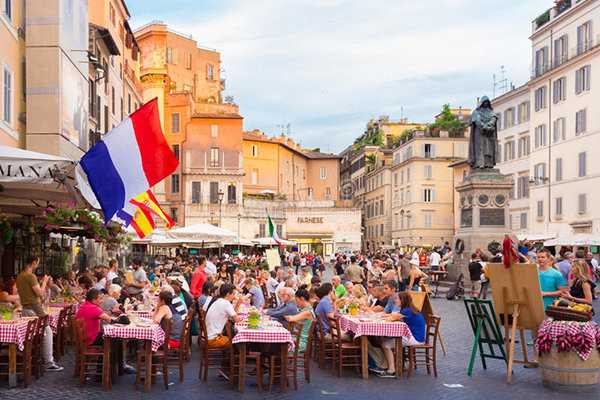


What is an Italian Piazza?
A Central Aspect of Italian Life
If you were to embark on a tour of Italy, one of the first things you’d probably be struck by is the ubiquity of the Town Square, or “piazza” as they’re referred to in Italy. Italian piazzas are very open and welcoming spaces, surrounded by beautiful buildings. They are the hearts and life centers and of Italian towns and cities, swarming with residents going about their daily business or simply taking time to reflect, gather, and enjoy life. What is it about these piazzas, though, that makes them so special and alluring? Maybe it’s the idea of a central gathering space in which the citizens of a town can gather, or perhaps it’s the charm that they add to any city. They are a blend of history, architecture and life, all of which blend together seamlessly to create an important cultural phenomenon unlike any other.
Piazzas date back to the Ancient Romans, whose towns typically consisted of a grid pattern built around two main roads. The space where these roads intersected was considered sacred, so large, open spaces flanked by markets, civic buildings, and other various shops were constructed in these areas. This was the template for the piazzas to follow, and in fact, some of these original Roman piazzas are still in existence today! By the time of the Renaissance period, Italian piazzas had fully evolved. An example of this is Piazza Pio II, widely regarded as one of the finest iterations of the Renaissance urban ideal. Located in the Tuscan town of Pienza and built in the 15th century, Piazza Pio II is notable for its trapezoidal shape—a new idea at the time.
Despite the piazza’s distant origins, they remain an important part of Italian culture and identity. Their usefulness and efficiency cannot be ignored, and they manage to provide this while evoking a sense of community rooted in history. Unlike a fine painting or architecturally brilliant church, the piazza’s value doesn’t lie solely in its physical traits. Rather, the human activity within a piazza is an integral feature of the piazza itself. People are the finishing touch that ties every element of the piazza together, like cars on a roadway or candles on a birthday cake. Simply put, the piazza becomes whole when its form is fully utilized. Italians will enjoy their leisure time in the piazza while sitting at a cafe, browsing the markets that can be found within, and simply going about their lives while surrounded by the rich history of their people. It is truly a testament to the architects of these piazzas that they continue to be used as they were originally intended to this day, and this also speaks to the great pride Italians have in their history and heritage.
Part of living like a local in Italy means enjoying a town square, and on our Highlights of Florence and Tuscany Experience, you’ll have the opportunity to do just that—while being guided by locals—in Florence, as well as the beautiful Tuscan towns of Pisa, Lucca, Siena, and several others. In order to get the most out of an Italian vacation, one must delve into the cultural pillars of the country, and piazzas are an excellent starting point!
